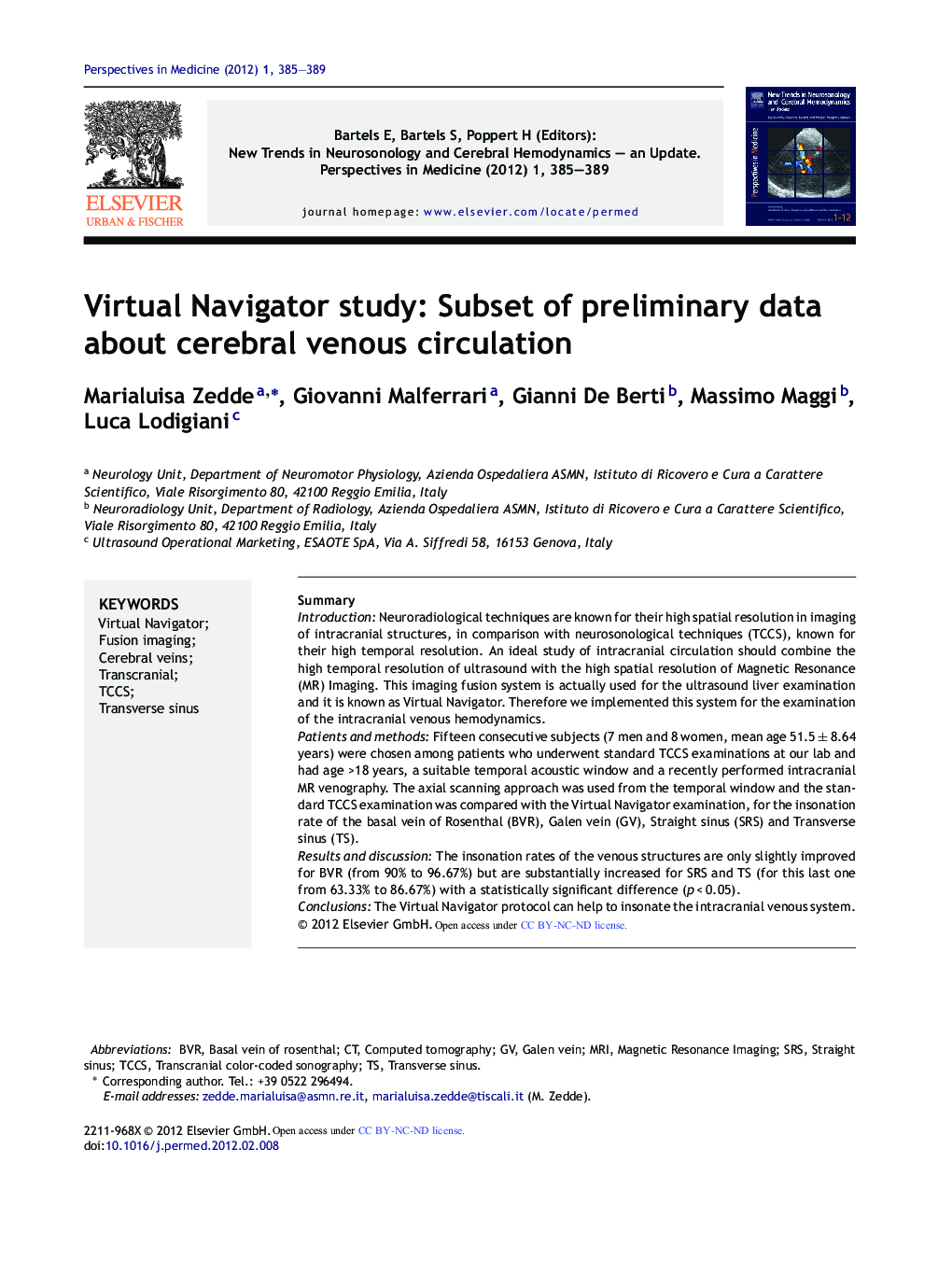| Article ID | Journal | Published Year | Pages | File Type |
|---|---|---|---|---|
| 331850 | Perspectives in Medicine | 2012 | 5 Pages |
SummaryIntroductionNeuroradiological techniques are known for their high spatial resolution in imaging of intracranial structures, in comparison with neurosonological techniques (TCCS), known for their high temporal resolution. An ideal study of intracranial circulation should combine the high temporal resolution of ultrasound with the high spatial resolution of Magnetic Resonance (MR) Imaging. This imaging fusion system is actually used for the ultrasound liver examination and it is known as Virtual Navigator. Therefore we implemented this system for the examination of the intracranial venous hemodynamics.Patients and methodsFifteen consecutive subjects (7 men and 8 women, mean age 51.5 ± 8.64 years) were chosen among patients who underwent standard TCCS examinations at our lab and had age >18 years, a suitable temporal acoustic window and a recently performed intracranial MR venography. The axial scanning approach was used from the temporal window and the standard TCCS examination was compared with the Virtual Navigator examination, for the insonation rate of the basal vein of Rosenthal (BVR), Galen vein (GV), Straight sinus (SRS) and Transverse sinus (TS).Results and discussionThe insonation rates of the venous structures are only slightly improved for BVR (from 90% to 96.67%) but are substantially increased for SRS and TS (for this last one from 63.33% to 86.67%) with a statistically significant difference (p < 0.05).ConclusionsThe Virtual Navigator protocol can help to insonate the intracranial venous system.
